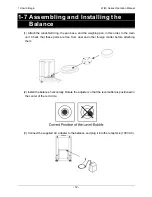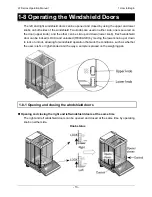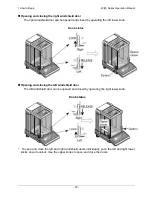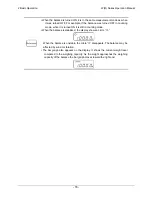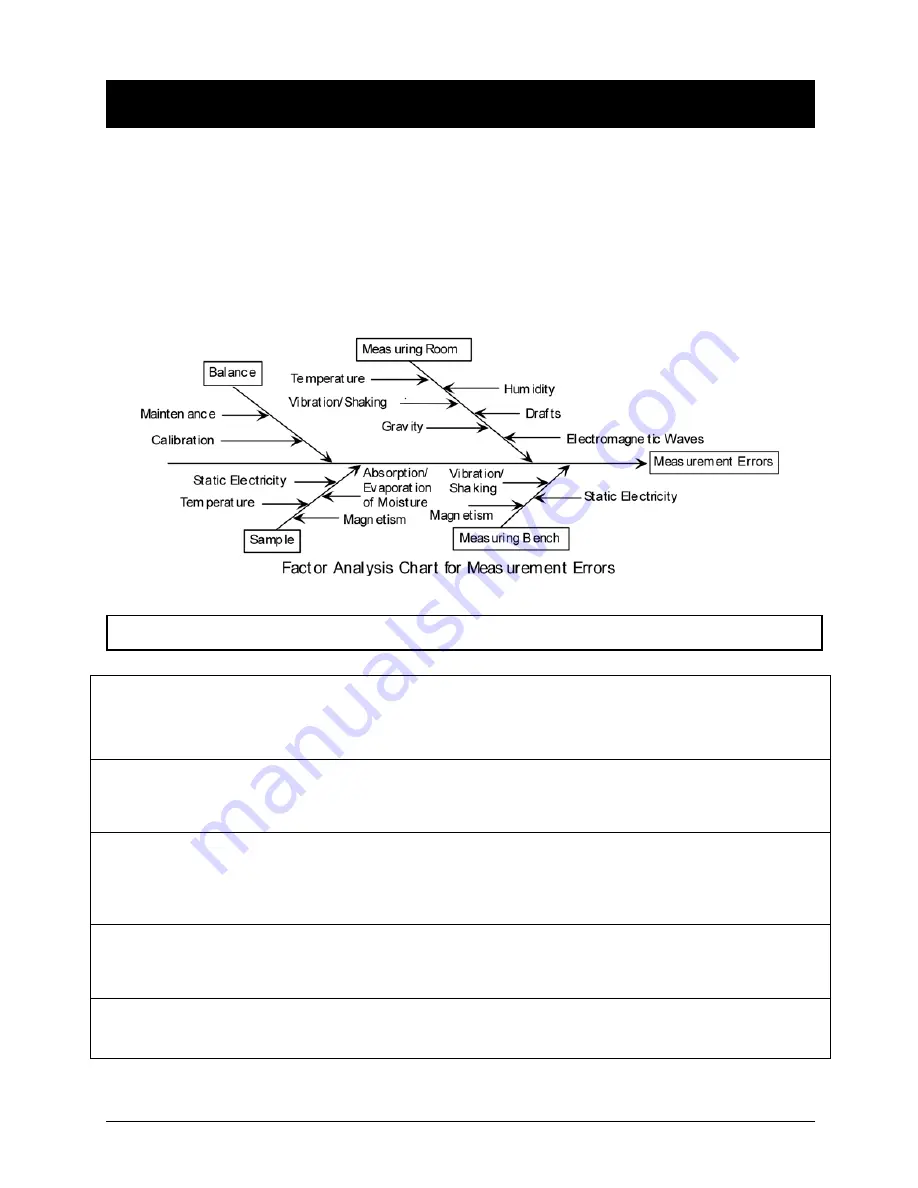
1 How to Begin
LF(R) Series Operation Manual
- 4 -
1-2 For More Precise Measurements
To be able to conduct more precise measurements, it is necessary to minimize the factors
that contribute to measurement errors. There are a great variety of such error-inducting
factors, which can be linked to machine error and performance of the balance itself, as well
as the properties and condition of samples being measured, and the measuring environment
(e.g., vibration, temperature/humidity). These factors can readily affect the results of
measurement on a balance that has high resolution readability.
This material includes some precautionary notes that the user should bear in mind to
eliminate error factors and ensure accurate measurement results.
1-2-1 Precautions on the Measuring Room
Temperature /
Humidity
•
Try to maintain constant room temperature as much as possible to prevent dew
condensation and unstable indications due to fluctuations in temperature.
•
Low relative humidity tends to induce static electricity, causing measurement error.
(Relative humidity of about 60% is considered ideal.)
Vibration /
Shaking
•
The measuring room should preferably be located on the ground floor or in the
basement. Higher floors are more susceptible to heavy vibration and shaking, which
make such locations less suitable for measurement. A room facing a railway or road
with heavy traffic should also be avoided as much as practicable.
Drafts
•
Avoid choosing a location subject to a direct draft of airflow from an air-conditioning
unit or exposed to direct sunlight, which may cause unstable reading due to abrupt
fluctuations in temperature.
•
Also avoid a room subject to a heavy flow of people, since fluctuations in drafts and
temperature are likely to occur in such a location.
Gravity
•
The gravity acting on a sample varies depending on the latitude or height of the
location where measurement is being conducted. For this reason, the same sample
may show different weight indications from one place to another.
Therefore, make it a rule to calibrate the balance every time it is relocated.
Electromagnetic
Waves
•
When the balance is located near an object that generates intense electromagnetic
waves, it may be hindered from showing accurate weight due to the effects of such
waves. Therefore, avoid placing the balance in such a location.
Summary of Contents for LF124R
Page 130: ...7 Troubleshooting LF R Series Operation Manual 120 Memo ...
Page 131: ...LF R Series Operation Manual Appendixes 121 Appendixes Appendix 1 Function Setting List ...
Page 132: ...Appendixes LF R Series Operation Manual 122 ...
Page 133: ...LF R Series Operation Manual Appendixes 123 ...
Page 134: ...Appendixes LF R Series Operation Manual 124 ...
Page 135: ...LF R Series Operation Manual Appendixes 125 ...
Page 136: ...Appendixes LF R Series Operation Manual 126 ...
Page 137: ...LF R Series Operation Manual Appendixes 127 ...
Page 138: ...Appendixes LF R Series Operation Manual 128 ...
Page 139: ...LF R Series Operation Manual Appendixes 129 ...
Page 144: ...Appendixes LF R Series Operation Manual 134 α check Display test α check Key test ...
Page 145: ...LF R Series Operation Manual Appendixes 135 α check Motor test Span adjustment history ...
Page 149: ...LF R Series Operation Manual Appendixes 139 Appendix 4 4 Unit Conversion Table ...
Page 150: ...Appendixes LF R Series Operation Manual 140 Appendix 4 5 Outline Drawings ...
Page 153: ......
Page 154: ......






















